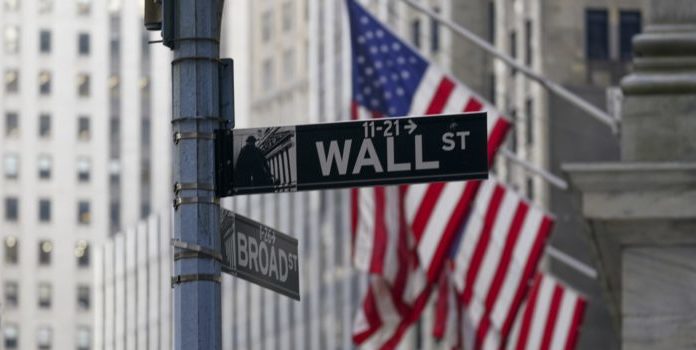(Headline USA) Wall Street capped a quiet day of trading with more losses Friday, as it closed the book on the worst year for the S&P 500 since 2008.
The benchmark index finished with a loss of 19.4% for 2022, or 18.1%, including dividends. It’s just its third annual decline since the financial crisis 14 years ago and a painful reversal for investors after the S&P 500 notched a gain of nearly 27% in 2021. All told, the index lost $8.2 trillion in value, according to S&P Dow Jones Indices.
The Nasdaq composite, with a heavy component of technology stocks, racked up an even bigger loss of 33.1%.
The Dow Jones Industrial Average, meanwhile, posted an 8.8% loss for 2022.
Stocks struggled all year as inflation put increasing pressure on consumers and raised concerns about economies slipping into recession. Central banks raised interest rates to fight high prices. The Federal Reserve‘s aggressive rate hikes remain a major focus for investors as the central bank walks a thin line between raising rates enough to cool inflation, but not so much that they stall the U.S. economy into a recession.
The Fed’s key lending rate stood at a range of 0% to 0.25% at the beginning of 2022 and will close the year at a range of 4.25% to 4.5% after seven increases. The U.S. central bank forecasts that will reach a range of 5% to 5.25% by the end of 2023. Its forecast doesn’t call for a rate cut before 2024.
Rising interest rates prompted investors to sell the high-priced shares of technology giants such as Apple and Microsoft as well as other companies that flourished as the economy recovered from the pandemic. Amazon and Netflix lost roughly 50% of their market value. Tesla and Meta Platforms, the parent company of Facebook, each dropped more than 60%, their biggest-ever annual declines.
Russia’s invasion of Ukraine worsened inflationary pressure earlier in the year by making oil, gas and food commodity prices even more volatile amid existing supply chain issues. Oil closed Friday around $80, about $5 higher than where it started the year. But in between oil jumped above $120, helping energy stocks post the only gain among the 11 sectors in the S&P 500, up 59%.
China spent most of the year imposing strict COVID-19 policies ,which crimped production for raw materials and goods, but is now in the process of removing travel and other restrictions. It’s uncertain at this point what impact China’s reopening will have on the global economy.
The Fed’s battle against inflation, though, will likely remain the overarching concern on Wall Street in 2023, according to analysts. Investors will continue searching for a better sense of whether inflation is easing fast enough to take pressure off of consumers and the Fed.
If inflation continues to show signs of easing, and the Fed reins in its rate-hiking campaign, that could pave the way for a rebound for stocks in 2023, said Jay Hatfield, CEO of Infrastructure Capital Advisors.
“The Fed has been the overhang on this market, really since November of last year, so if the Fed pauses and we don’t have a major recession, we think that sets us up for a rally,” he said.
There was scant corporate or economic news for Wall Street to review Friday. That, plus the holiday shortened week, set the stage for mostly light trading.
The S&P 500 fell 9.78 points, or 0.3%, to finish at 3,839.50. The index posted a 5.9% loss for the month of December.
The Dow dropped 73.55 points, or 0.2%, to close at 33,147.25. The Nasdaq slipped 11.61 points, or 0.1%, to 10,466.48.
Tesla rose 1.1%, as it continued to stabilize after steep losses earlier in the week. The electric vehicle maker’s stock plummeted 65% in 2022, erasing about $700 billion of market value.
Southwest Airlines rose 0.9% as its operations returned to relative normalcy following massive cancellations over the holiday period. The stock still ended down 6.7% for the week.
Small company stocks also fell Friday. The Russell 2000 shed 5 points, or 0.3%, to close at 1,761.25.
Bond yields mostly rose. The yield on the 10-Year Treasury, which influences mortgage rates, rose to 3.88% from 3.82% late Thursday. Although bonds typically fair well when stocks slump, 2022 turned out to be one of the worst years for the bond market in history, thanks to the Fed’s rapid rate increases and inflation.
Several big updates on the employment market are on tap for the first week of 2023. It has been a particularly strong area of the economy and has helped create a bulwark against a recession. That has made the Fed’s job more difficult, though, because strong employment and wages mean it may have to remain aggressive to keep fighting inflation. That, in turn, raises the risk of slowing the economy too much and bringing on a recession.
The Fed will release minutes from its latest policy meeting on Wednesday, potentially giving investors more insight into its next moves.
The government will also release its November report on job openings Wednesday. That will be followed by a weekly update on unemployment on Thursday. The closely-watched monthly employment report is due Friday.
Wall Street is also waiting on the latest round of corporate earnings reports, which will start flowing in around the middle of January. Companies have been warning investors that inflation will likely crimp their profits and revenue in 2023. That’s after spending most of 2022 raising prices on everything from food to clothing in an effort to offset inflation, though many companies went further and actually padded their profit margins.
Companies in the S&P 500 are expected to broadly report a 3.5% drop in earnings during the fourth quarter, according to FactSet. Analysts expect earnings to then remain roughly flat through the first half of 2023.
U.S. stock markets will be closed Monday in observance of the New Year’s Day holiday.
Adapted from reporting by the Associated Press

